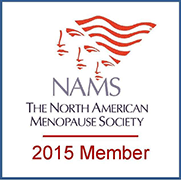Health Issues
The breast is an important part of the human body and its health is very crucial to our overall wellbeing. The structure of the breast changes at different stages of a woman’s life, such as during her menstrual cycle, pregnancy, breast-feeding, menopause and aging¹. Knowledge about these changes is helpful in pinpointing abnormal changes. Proper nutrition is also a factor.
During perimenopause, the breast can become less firm/full, lumpy or tender due to fluctuating hormone levels. Sometimes painful breast may occur after starting hormone therapy, but resolves on its own. If the breast pain persists, report to your doctor.
Some factors affecting breast health are:
- Diet
- Smoking
- Excessive alcohol intake
- Exposure to chemicals/radiation
- Obesity
- Heredity
- Age
- Know the risk factors for breast cancer. Check the Canadian Cancer Society’s website at www.cancer.ca to learn about the risk factors.
- Reduce your risk. Research shows that 50% of cancers can be prevented by living a healthy lifestyle⁴ :
- Eat healthy: your diet can affect breast health. Studies show that people with diets rich in fruits and vegetables have a lower risk of having cancer. Eat 5 to 10 servings of vegetables and fruit every day; choose high-fibre, lower-fat foods. Whole grains and fish are also recommended.
- Reduce stress, sleep well and drink lots of fluids
- Cut down on caffeine and salt
- Always wear a comfortable bra to help painful breasts during perimenopause
- Avoid smoking
- Be physically active 30 to 40 minutes each day
- Limit alcohol consumption to less than 1 alcoholic drink per (less than 7 servings per week)
- Maintain a healthy body weight
- Minimize exposure to radiation
- Watch out for breast changes, signs and symptoms:
- Painless lump or swelling in the breast or armpit
- Change in breast size or shape
- Dimpling or puckering of the skin which may look like orange peel
- Redness, swelling, increased warmth in the affected breast
- Inverted nipple – nipple turns inward
- Crusting or scaling on the nipple
- Painless lump or swelling in the breast or armpit
- Follow breast screening recommendations:
- Get to know your breasts by doing breast self-exam regularly
- Have a clinical breast examination by a trained health professional at least every two years if over the age of 40
- Have a mammogram. All women between the ages of 50 and 69 should have a mammogram every two years. Women who have a family history of breast cancer should have a mammogram every year. If you are between 40 to 49 years old, discuss your risk of breast cancer and risks of mammography with your doctor. If you are 70 and older, talk to your doctor about your screening needs.
- If you notice any changes, see your doctor right away. Many women discover their own breast cancer through changes in the look and feel of their breasts.
- Get to know your breasts by doing breast self-exam regularly
Canadian Cancer Society
www.cancer.ca
Canadian Breast Cancer foundation
www.cbcf.ca
is an excellent, in depth resource for breast health, a must read!
Canadian Women’s Health Network
www.cwhn.ca
References:
- Canadian Women’s Health Network, Keeping your breasts healthy, Revised March, 2013
- Saskatchewan Cancer Agency, Screening program for breast cancer, Retrieved February 12, 2015 on www.saskcancer.ca/Default.aspx?DN=3f3b564f-a7d1-4bee-bb80-0ec8f2b6b5d4
- Canadian Cancer Society, Signs and symptoms of breast cancer, Retrieved February 13, 2015 on www.cancer.ca/en/cancer-information/cancer-type/breast/signs-and-symptoms/?region=on
- Canadian Breast Cancer Foundation, Be Breast Healthy, Retrieved February 13, 2015 on www.cbcf.org/atlantic/Aboutbreasthealth/Pages/default.aspx
- Health Canada, Cancer, Breast Cancer, Retrieved February 14, 2015 on www.phac-aspc.gc.ca/cd-mc/cancer/breast_cancer-cancer_du_sein-eng.php
- Canadian Medical Association Journal, November 22, 2011 vol. 183 no 17 doi: 10.1503/cmaj.110334, Recommendations on Screening for Breast Cancer in Average Risk Women aged 40-74 years.
Improving Women's Lives Through Better Health in Mid-Life and Beyond


